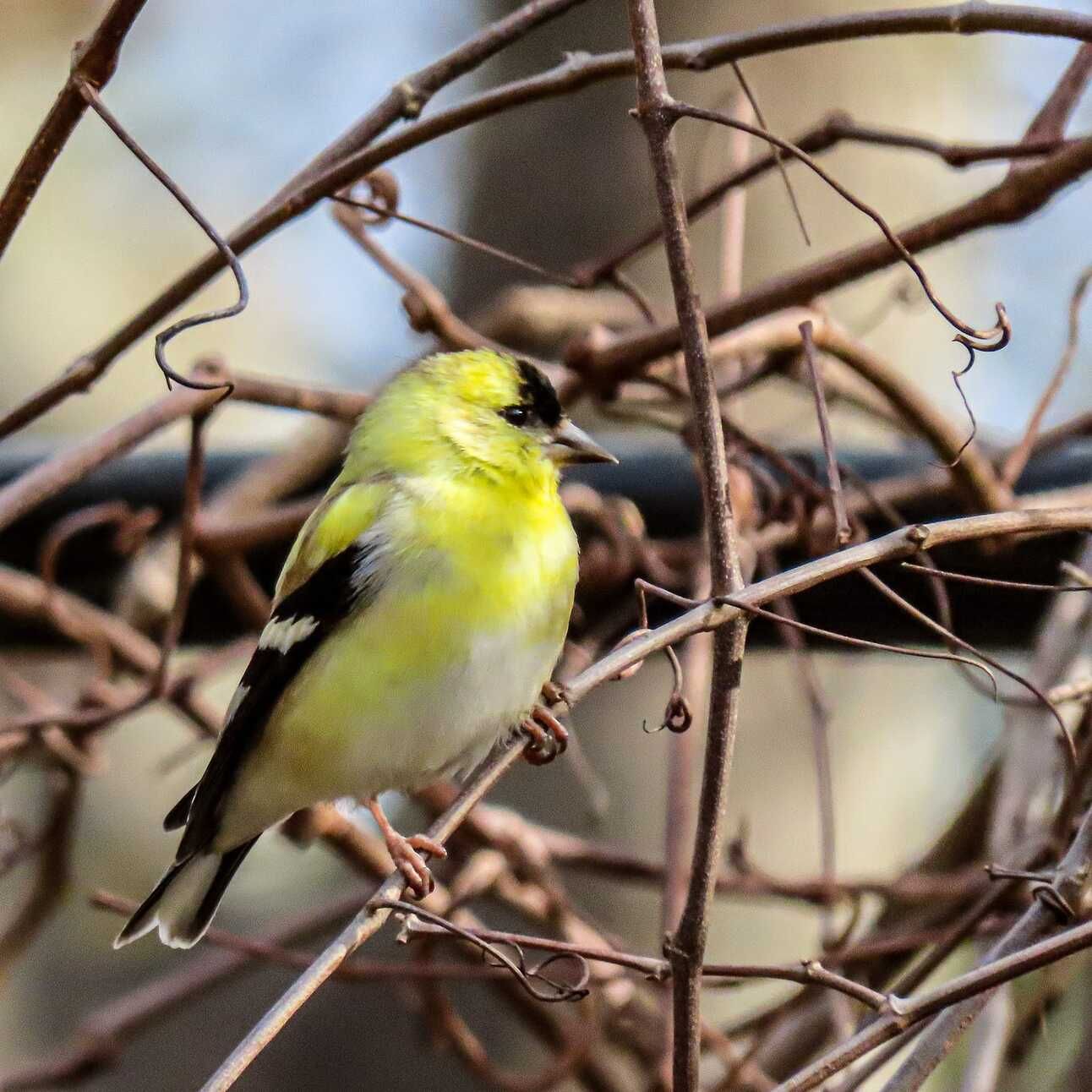- Ranch Naturalists
- Posts
- Do Goldfinches Migrate?
Do Goldfinches Migrate?
Answering questions through community science
I posted this photo of an American Goldfinch from my backyard recently on Facebook, and a friend asked me if they are migratory, since she didn’t often see them.

The short answer, is yes, they are in fact migratory.
The longer answer has been solved by community science!
I’ve been watching and counting birds every day and submitting my counts to eBird. Every day I add more data to the global database, along with millions of other bird watchers. I can see counts and trends from both my data and all the other data uploaded and used by real scientists.
For example, here is a bar chart showing the trend of American Goldfinches recorded by me in my backyard — extremely localized, but still, useful data.

You can see the small green bars start in November, growing to a peak in February, and then disappearing around March. I didn’t see any in my backyard from April through October.
This data, along with data from all the other community scientists, can result in a range distribution map like this

Notice how the non-breeding (blue) section of the maps correlates almost exactly with my own bar chart?
For even more information about distribution, you can see an abundance map for every week of the year, animated to see their movement!
I do a lot of bird surveys, counts and casual trips, including a daily streak of an eBird submission for almost 1,100 days in a row, but that kind of dedication is not necessary. Any data is useful, and anybody can make a useful contribution.
For example, FeederWatch only asks you to count birds at your local feeder on two consecutive days no more than once a week. Even if you only count once all season, your data is valuable.
Anyone can participate in community science and make a difference. It isn’t just birds, it’s all fields of science: ecology, astronomy, medicine, computer science, statistics, psychology, genetics, engineering and many more. The massive collaborations that can occur through community science allow investigations at continental and global scales and across decades—leading to discoveries that a single scientist could never achieve on their own.
Share an observation. Make a difference. Answer a random question about goldfinches.
A good place to start is SciStarter, where you can choose to participate in hundreds of different projects to benefit science. Two of my own personal favorites are eBird and iNaturalist. If you read these updates from us in the future, you can be sure you’ll hear more about both.